Introduction
War of perception is a tool to expand the domains of conflict geographically and demographically. Pakistan and its proxies have created an impression as if entire Jammu & Kashmir (J&K) is fighting a separatist movement, whereas, the internal instability is restricted to only six districts of Kashmir Valley consisting of a total area of approximately 5500 square km out of the total Area of 101,387 square km of the Indian State of J&K. The current instability in J&K is outcome of the strategy employed by Pakistan, that when you cannot compete on a traditional battlefield, you look to where your adversary is vulnerable1; and Pakistan found that India is demographically and politically vulnerable in J&K. Pakistan has managed to drive a wedge deep enough within the society to undermine the sense of shared values that form the foundation of democracy2 and enshrined values of Kashmiriyat. The situation in J&K is that State is crippled by terrorism, political and social crisis, and is not in a position to put in place the necessary building blocks for development,3 peace and stability.
Perception Warfare Projected Jihad as Religious Duty
The youth of Kashmir seems to have lost the sagacity of rationality after having fully known the consequences of Jihad. Clausewitz had stated that more often than not “habitual aggressors are likely to end up as failures”, yet Jihadists are making vulnerable youth believe that they will be ultimately victorious in their objective. In fact, they have created an illusion as if Kashmir is at the verge of becoming an Islamic State. The problem in Kashmir is that when mosque is the only outlet for mass politics, the outcome is often religious dissent and radicalisation of youth. The youth of Kashmir today is joining terror organisations due to social, cultural, economic, political, and psychological factors coming together4 and backed by aggressive, emotional and ideological misinformation campaign by Pakistan.
A sense has been created that it is a religious duty of every Kashmiri youth to join Jihad and there is a large percentage of youth those who join terror outfits believing that it is indeed his duty; some do join under peer pressure or fear of failure in life. Return of youth back to main stream is stigmatised and the parents too have to face the anger of religious zealots. Jihadi ideologues are creating alternative narrative and pushing moral boundaries to legitimise the violence and unending miseries as a service for God. Characteristics of Pakistani propaganda is that it is generating very strong emotions – aggression - and has managed dramatic departure of society from the reality.5 Qanta Ahmed says, that, “Political Islamism is more dangerous than even Nazi supremacism – an ideology which defines the world’s lowest point in human history.6 The biggest danger in Kashmir is that their goals are nihilistic and non-negotiable; they want the total elimination of all who are not with them.7
Kashmiri society will face major crisis because the children of Jihad have no skill beyond that of a fighter or a stone pelter, and as a result their integration with the society will be a major issue. The reality is that over a period of time terrorist groups have accumulative extensive hard power, they also have considerable soft power in terms of management of public perception, which they have proved to be adept in using.8 These youths have now started to define their identity with the perceived ‘just cause’. Public adulation and glorification of so called martyrdom is fueling this perception and youth believe that that this is the right path. A popular sentiment is being evoked that there is no glory to die natural death than to die as a martyr for the cause of Jihad. Theoretically, if the current situation in Kashmir is examined, it indicates that there is break down in relationships between youth and society, youth and state authorities and parents and children. It has manifested primarily due to frustration against lack of opportunities for development, lack of recognition and identity. Whether it is tension, conflict, or violence, it has origins in divisions in class, status, ethnicity, religion, or ethno religious nationalism. 9
Can this logjam and web in which youth of Kashmir has got caught up can be handled purely by law enforcing authorities and battle of narrative? To bring youth out of this muddled environment there is a need to establish communication and dialogue not by authorities but by a third party who appear to be empathising with the youths, they could be mix of theological experts, social scientists and academicians (mix of locals and from the outside the State). According to John Burton, the initial dialogue must center on public security, development, political access, identity needs and youth aspirations.
Instability in Kashmir is a Strategy to Overthrow the Established Order
Historically it is proved that terrorism and insurgency is born when there is perception of polarisation of the community for political reasons, endemic corruption, sectarianism, rising aspirations of the people and perceived threat to the culture or religion. Lasting peace requires stable political and economic environment. Do we realise what is the cost and value of peace? Physical, cultural and structural violence not only causes collateral damage and stunts the growth of a state, society and the citizens but also destroys culture, heritage and future generations. In 2012, the Institute for Economics and Peace has evaluated the cost of peace, and as per their finding peace in the world is worth $9.4 trillion.10 Terrorism degrade societal values, subvert democratic institutions and destroys public order. Eric Brahm, while quoting Metz wrote, “Broadly speaking, terrorism and insurgency is a strategy to overthrow the established order”.
Pakistan has been working consistently to overthrow the established order and it has targeted the grass root democracy, as a result the State has not been able to conduct Panchayat elections nor has it been able to conduct the Lok Sabha bye poll election from Anantnag District. It is indeed a direct attack on discrediting the established order and portraying the people having lost faith in the Indian democratic system. Survival of democracy in J&K is important for legitimate control of India over the State. If the Jihadi organisations are able to subvert elections in Kashmir, it certainly will create major challenge to the Government and can be misunderstood by international community as rejection of established order by the people of the Kashmir Valley. That would be a big setback and could be a turning point in the political history of Kashmir. Out rightly rejecting democratic process will mean rejecting Kashmir as part of democratic India. There is a need to carefully examine if such a situation can emerge in near future, and if such designs do exist these are required to be nipped in the bud before these unfold during the next general elections in 2019.
Role of Non-Military Means
The role of non-military means of achieving political and strategic goals have grown, and, in many cases, they have exceeded the force of weapons in their effectiveness, especially against hybrid/asymmetric threats.11 Contradictions do exist in approach of security forces and terrorists. While terrorists are developing strategies to target and attract the youth, counter-terrorism efforts continue to focus on hard power as the central approach in dealing with this issue.12 The big question is, can the policy of elimination of terrorists erode the ideology of Jihad and deter youth from joining terror organisations? The answer to this question is given by Simon Cottee, and he says, “Law-enforcement agents can’t disrupt a motive, but with the right intelligence they may be able to disrupt a network of terrorist recruiters”.13 30 years long conflict in Kashmir has indicated that the military action alone cannot defeat the Jihadists. Instead of focusing just on engagement with the terrorists, there is also a need to focus on the ideologues and their support base within and outside the country.
A sound counter-terrorist strategy is undoubtedly important to deal with violent movement. However, it’s not sufficient in the long run. If we want to defeat terrorism permanently and completely, we need to tackle it comprehensively, using political and military intelligence, social integration, and economic development.14 Non-military strategy is not a replacement for counter-terrorist operations but it facilitates in elimination of the terrorism. There is often a debate that situation was brought near normal by security forces between 2006 to 2010 but political leadership failed to seize the opportunity and the State missed a chance to return to enduring peace.
The problem was that political leadership failed to recognise that the immediate post-conflict stage has a phenomena known as “negative peace”, which means that whilst ‘overt physical violence may have ended or reduced, other political, social, economic and cultural factors that adversely affect human opportunities and quality of life may persist’.15 Negative peace or post-conflict peace is fragile and has the potential of reversal if visible actions are not taken for redressal of grievances at political, social and economic spheres. To understand these nuances of non-military measures, there is a need to understand the theory of conflict management, so as to ensure smooth transition between conflict to conflict management and finally conflict resolution. Hence, it is vital to examine a conflict from theoretical point of view, which in our case has been given just a lip-service.
The State need not be regulated by security forces actions, rather it should be regulated by law and responsive administration. But that does not mean that the State should allow disruption of its authority by terrorists and their ideologues. Population should follow the rule of law and if they attempt to disregard the authority of the State, in that case violators should face the consequences of the law. Delivery of justice is vital, but so far no terrorist (Pakistani or Indian) apprehended during encounters has been charged and punished for waging war against India. Deterrence of law is imperative to bring order on the streets.
Bringing calm to the streets is an important challenge that will determine success or failure of the Governor’s rule in J&K. If the administration is able to send back students to education institutions and ensure constructive engagement of the youth, it will set a stage and benchmark for political leaders to perform as and when next government is elected. The problem of Kashmir has been the unarmed Jihadi who have been principle actors to destabilise the Valley. As long as unarmed Jihadi continue to operate without fear of law, the Valley will continue to bleed. There is a need to act against the ideologues and unarmed Jihadis and curtail their freedom of activities.
Disruption of recruitment to terror organisation is vital. Gen Dhruv Katoch, Director, the India Foundation, says that, “disruption of recruitment of terrorists in J&K is key to bring calm to the Valley and if the administration and intelligence agencies are able to curb this initiative of the ideologues of Jihad, it will bring stability and peace to the valley”. Presently there is a complete breakdown of the communication between Government and the civil society. This communication can only be established if the State is responsive to the grievances of the people. According to John Burton, the initial dialogue must center on public security, development, identity needs, youth aspirations and political access. Governor’s rule needs to set in motion a movement so that society is able to reclaim the societal space which is essential for enduring peace and stability. Choice of medium of communication is important so that right message reach right people, whether they are with the State or against it.
Switching of Strategies
Switching of strategies is most significant aspect of defeating an adversary in a conflict of perception and asymmetry. In the current setting in Kashmir, the State needs to develop the ability to predict, deduce, define, and delineate the adversary’s strategy16. Switching of strategy is also required in counter-terrorist operations. Targeting of terror ideologues even across is a must to send a message that no terrorist is safe within or outside Kashmir. Flow of funds had temporarily stopped but ways and means have been worked out to recommence the flow of funds. There is no option but to dry up the funding sources to create a sense of desperations among the armed and unarmed Jihadis.
In asymmetric conflict, one must remember that if state is switching strategy so will be the separatists and terrorists. However, every move of adversary in such a scenario should be countered. Separatists are making all out efforts to spill over the instability to South of the Pir Panjal Ranges. The vulnerable areas that can be targeted by the ISI and separatists in the Chenab Valley, Poonch- Rajouri and Kargil. The Government should ensure that these areas are not alienated and should be paid due dividends for ensuring peace. Any effort of communal disharmony needs to be curtailed with iron hands and politicisation of issues, such as juvenile rape case of Kathua, should not be allowed to communalise the entire region. Such opportunities should not be handed over to the separatists and the ISI to reignite instability in the areas that are comparatively peaceful.
The ground input suggests that people have welcomed the imposition of Governor’s rule. The fear of the people is that the political parties in J&K may sabotage the Governor’s rule because of its transparency and efficiency. Even separatists and the ISI would like to create disruption and show Governor’s rule as failure. But people have termed it as re-establishment of responsible administration. The bureaucracy has already fallen in line, and government departments have started responding to the environment. Such accountable administration is key to calm the tempers on the streets.
Conclusion
There is a perception among the youth of the State that there is no one who is prepared to listen to them. They are angry and do not want to be preached. They want to be heard since they believe that they are the biggest stakeholders and also the losers in this muddled environment. Matilda Flemming, leading coordinator at the United Network of Young Peacebuilders, said, “The creation of spaces for youth to express their opinion to decision-makers and broader society ensures that they have the opportunity to be heard.” Governor’s rule should create a suitable platform and mechanism where administration and policy makers do get to hear the youth and their grievances. Governor’s rule should restore the trust between people and the State through the practice of welfare state and dismantle the perception of turning Kashmir into a police state or to be plagued by anarchy.
A good positive narrative is reflected through good work by the government and the society. This can be reflected positively and effectively by a neutral and transparent media trusted by both sides. Modern mass media plays a significant role in perception management in today's society. They maintain flow of information, both positive and negative. There is churning within Kashmiri society and this churning needs to be converted into a movement for peace, stability and development.
End Notes:
1. Anja Kaspersen, Espen Barth Eide & Philip Shetler-Jones, 10 trends for the future of warfare, World Economic Forum, Nov 03, 2016.
2. Suzanne E. Spaulding, Eric Goldstein, Countering Adversary Threats to Democratic Institutions, Centre for Strategic & International Studies, Feb 2018.
3. Prof. Bonny Ibhawoh, Peacebuilding and Conflict Resolution: Essential Ingredients for Sustainable Development in Africa, Remarks at the 3rd Covenant University International Conference on African Development Issues at Covenant University, Ota, Nigeria, May 9, 2016
4. Ömer Taspınar, Fighting Radicalism, not ‘Terrorism’: Root Causes of an International Actor Redefined, SAIS Review vol. XXIX no. 2 (Summer–Fall 2009).
5. Armand Gosu and Octavian Manea, The Russian psychological warfare, Accessed from http://www.roec.biz/bsad/portfolio-item/the-russian-psychological-warfare/ on October 19, 2017.
6. Qanta Ahmed, The new jihad -- a violent, intrusive and dangerous threat to world order, Fox News, October 09, 2013
7. Ibid.
8. Thomas Koruth Samuel, The Lure of Youth into Terrorism, South East Asia Regional Centre for Counter Terrorism, accessed on May 30, 2018 from http://www.searcct.gov.my/publications/our-publications?id=55
9. Conflict And Peace: A Theoretical Analysis, Accessed from Shodhganga on June 14, 2018, http://shodhganga.inflibnet.ac.in/bitstream/10603/94710/9/09_chapter%202.pdf
10. Bonny N 3.
11. Mark Galeotti, “The Gerasimov Doctrine and Russian Non-linear War”, July, 2014. https://inmoscowsshadows.wordpress.com/2014/07/06/the-gerasimov-doctrine...
12.
13. Simon Cottee, What Motivates Terrorists? The Atlantic, June 9, 2015.
14. Norman Loayza, How to defeat terrorism: Intelligence, integration, and development, Brookings, July 25, 2016
15. Tom Mccarthy, The Importance of Development in Societies Emerging From Conflict, Accessed on June 13, 2018 from http://www.e-ir.info/2011/08/29/the-importance-of-development-in-societies-emerging-from-conflict/ originally published on Aug 29 2011.
16. Navneet Bhushan, Winning the Asymmetric Wars – A need for Rapid Strategic Switching, Indian Defence Review, Sep 17, 2016.
(The paper is the author’s individual scholastic articulation. The author certifies that the article/paper is original in content, unpublished and it has not been submitted for publication/web upload elsewhere, and that the facts and figures quoted are duly referenced, as needed, and are believed to be correct). (The paper does not necessarily represent the organisational stance... More >>
Image Source: http://iblagh.com/en/wp-content/uploads/2017/05/9-1.jpg

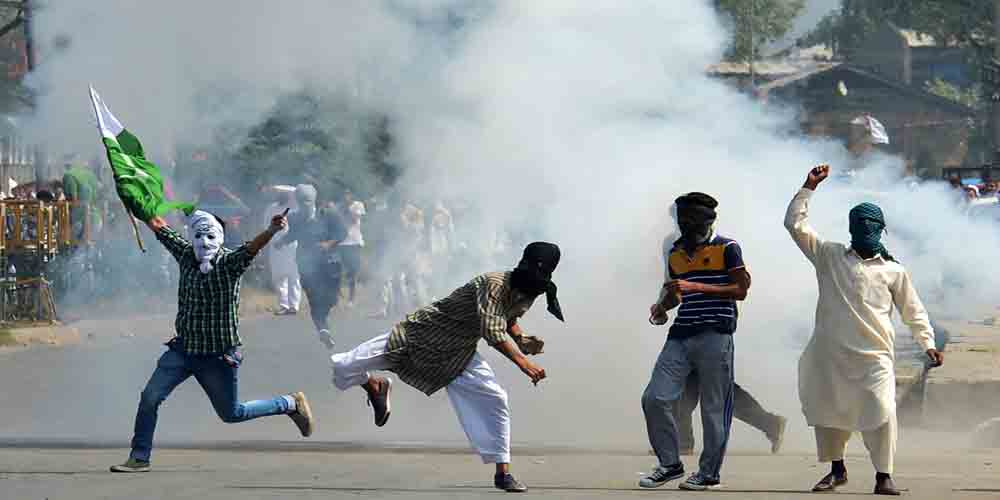


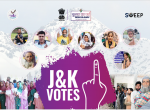

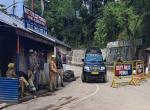
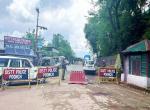
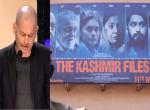
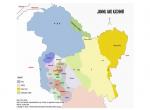
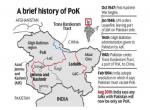
Post new comment